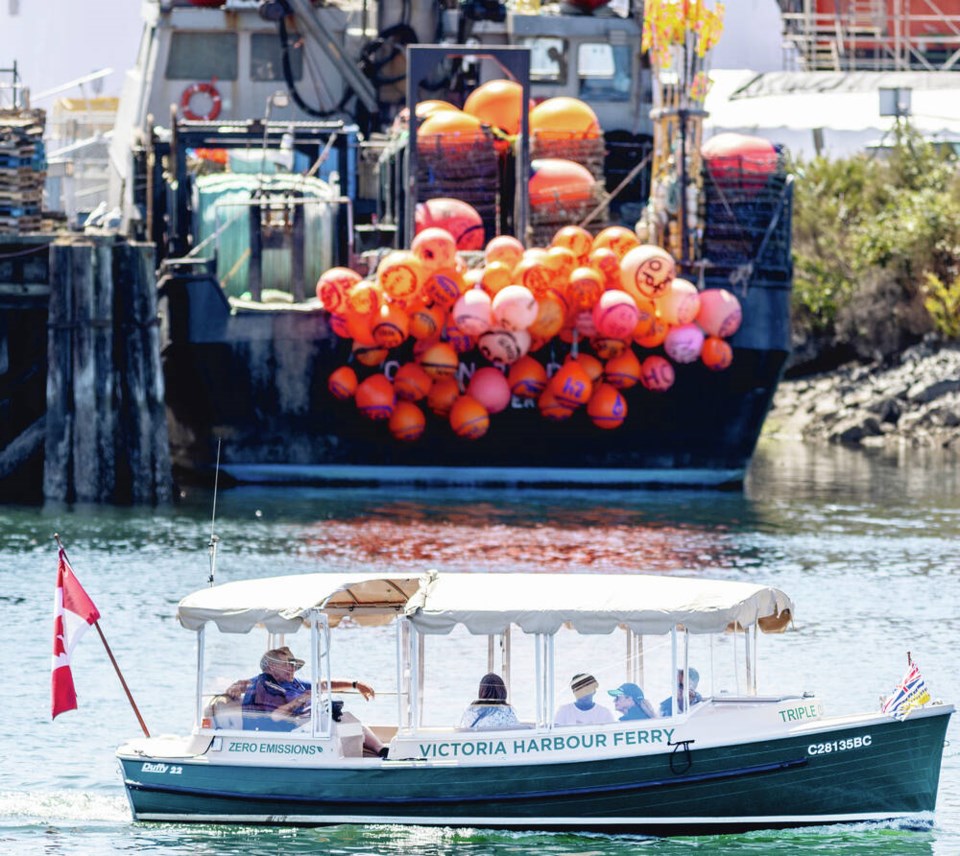Update: Rain and showers are in the Greater Victoria forecast for Monday and Tuesday, ending a no-rain stretch that has lasted for about six weeks. Periods of rain can be expected from early morning until late afternoon on Monday. The Weather Network is forecasting as much as 15 to 20 mm during that period in some parts of Greater Victoria. Expect a high of 18 C.
Rain is also in the Monday forecast for other parts of Vancouver Island, including Duncan, Nanaimo, Campbell River, Comox, Port Hardy, Port Alberni, Ucluelet and Tofino.
On Tuesday, for Greater Victoria and much of Vancouver Island, there’s a chance of showers.
The last time Greater Victoria had notable rain was on June 9 and 10. At Victoria International Airport, 5.3 mm fell on June 9, and 11.3 mm on June 10, according to Environment Canada records. There was 0.2 mm of rain on June 19.
For the rest of this week, the Greater Victoria forecast is calling for mostly sunny weather with highs of 20 C increasing to 25 C by Saturday and lows of 12 C to 13 C. Sunny weather also in the forecast for most of Vancouver Island from Wednesday through Friday.
Vancouver Island is in the midst of a Level 5 drought, which is the highest level. Water-use restrictions are in effect around the Island. But the restrictions are at the lowest level in Greater Victoria because it relies on the Sooke Reservoir for its water supply. The Sooke Lake Dam was raised in 2002, increasing storage capacity for water from winter rainfall. The reservoir was 82.6% full on Friday. A year ago, it was 91.5% full.
- - -
The Coastal Fire Centre is hoping rain in the forecast will provide a reprieve from tinder-dry conditions in some parts of Vancouver Island over the next few days. Port Alberni, Nanaimo and Courtenay are among the communities that could see showers on Saturday.
Sunny skies are in the capital region forecast for the weekend.
Kyla Preto, a fire-information officer at the centre, said there are two new lightning-caused blazes on the Island, one near Gold River and one about 50 kilometres north of Campbell River. The Gold River fire, which is considered out of control, is visible from the village but is not threatening buildings, Preto said.
On Friday, 15 personnel and a helicopter tackled the fire, which covers 20 hectares.
The fire north of Campbell River is about 60 hectares and also rated as out of control, burning in very steep terrain. Crews have yet to be deployed because of the hazardous location.
With wooded areas on the doorsteps of many municipalities, fire departments continue to spread the message to use care and common sense to prevent human-caused blazes.
But not everyone seems to be listening, said Sooke Fire Chief Ted Ruiter. “We still get the odd person that is continuing to burn or have campfires.”
Campfires are banned throughout B.C., except on Haida Gwaii.
Sooke residents saw how close wildfires can get in early July with the Tugwell Main blaze west of town, near Otter Point, which firefighters kept at less than half a hectare in size.
Ruiter said if the forecast bears out, things could get very hot in August. “Along with the threat of wildfire, we’re wanting to make sure that our residents are aware of the different things to do in regard to heat emergencies and heat domes and taking care of themselves.”
In Sooke, a community heat plan includes steps like designating the library and other sites as cooling centres, Ruiter said.
With extreme fire-danger conditions, the Capital Regional District is taking steps to protect the 20 square kilometres of Sooke watershed land.
Annette Constabel, senior manager of watershed protection for the Capital Regional District’s Integrated Water Services, said there are daily ground patrols in the watershed and twice-daily air patrols, with contracted aircraft looking for indicators like smoke.
“And now that we’re in extreme fire-danger rating on south Vancouver Island, we’re limiting our own operations in case of any sparks we might cause,” said Constabel, adding one thing that helps is the fact that the watershed is closed to the public.
Twenty-three staff members are trained in fighting wildfires, she said, and others are on standby. The water district has an aid agreement with the B.C. Wildfire Service, Constabel said. “We do rely on them to be our backup and potentially the lead in case of fire.”
— Jeff Bell



